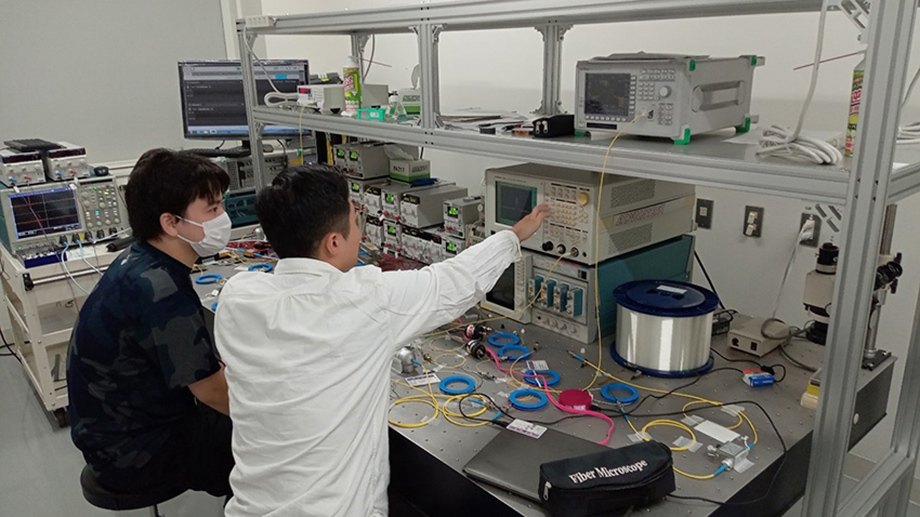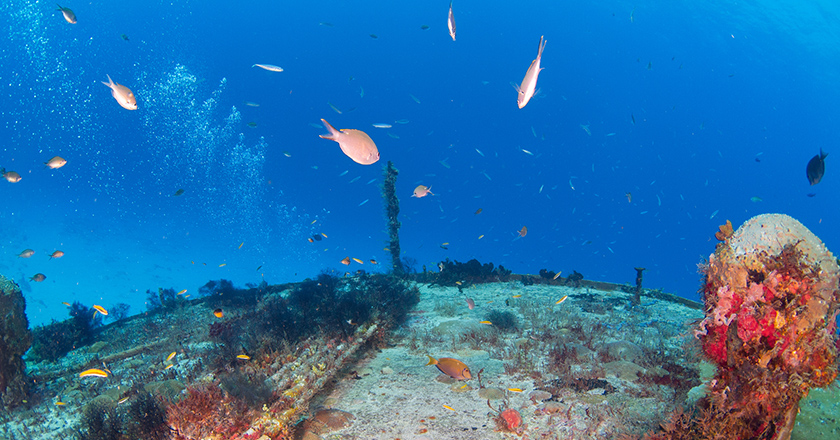Optical submarine cable, aorta of information flowing to the world
Communication technologies are broadly classified into wireless and wired communications. In the past, the communication of information with overseas countries was mainly carried out by satellite communication, which was radio communication. On the other hand, the current mainstream is submarine cable, or optical submarine cable, which uses optical fiber for wired communication.
The submarine cable itself has a long history and was first put into practical use in 1851, two years before the “arrival of the Black Ships.” Between the UK and France, metal telegraph cables were laid in the Strait of Dover to send low-speed digital signals. It then spread globally as a way to connect countries, but there were some problems. One of them was its cost. It costs a lot of money to connect countries with submarine cables. And over long distances, such as across the Pacific Ocean, the communication speed achieved by using metal cables was limited. In contrast, satellite communications were very convenient because they could be shared among countries, although it was very expensive to launch a single craft.
However, in wireless communication, there is a limit on the frequency of radio waves that can be used. Radio, television, fire and police radios and other radio waves of various frequencies fly around a space, and the frequencies that can be used are determined by law in each country. The amount of information that can be sent via satellite is therefore limited. Optical fibers, on the other hand, communicate in a closed cable, so a variety of frequencies can be used at once. In addition, light can exchange information at a high speed and large capacity, to which radio waves cannot be compared.
Optical submarine cables started in 1986 when a submarine cable was used between the UK and Belgium. From there, the communication network spread quickly, and the rate of communication between continents accordingly changed, with the use rate of optical submarine cables and satellite communications changing from 50:50 in 1995 to 99:1 in 2014. Of course, it costs a lot to lay these cables. It is said that it takes about at least 30 billion yen to lay an optical submarine cable from Japan to the west coast of the United States across the Pacific Ocean. However, since it can send a huge amount of information along one line, it’s worth the cost if it is divided by multiple companies even at the cost of several tens of billion yen.
Meanwhile, wireless communication will not disappear. The advantage of satellite communication is that you can communicate from a ship in the middle of the Pacific Ocean, for example. Also, it is only with satellite communication that the Internet can be used on airplanes. These are benefits which fiber-optic communications do not have. Most recently, Elon Musk launched several thousand satellites in a project called Starlink to provide instant internet access from anywhere on earth. Both wired and wireless communication technologies are used in different ways worldwide.
Optical fiber communication technology that allows light of various frequencies to reach far distances efficiently
In fiber-optic communications, information is transmitted by light traveling through a thin thread of glass. Simply put, turning the light on or off transmits digital “0” and “1” information.
A major feature of this technology is that signals can reach far and efficiently. Glass can be made as transparent as possible by removing impurities, and signals can be transmitted without relay within a distance of about 100 km. In the case of metal electrical cables, the signal is attenuated after some transmission, so the amplification process has to be repeated, but in the case of fiber optic cables, the amplification repeaters need only be placed at intervals of nearly 100 km. Currently, fiber-optic cables seem to be the best wired communication in terms of medium.
Fiber optic cables are designed to last for 25 years after they are laid down. Although they are made safely, there is also a risk that submarine cables may be damaged in many ways. These include being dragged by the sea floor owing to an earthquake, or being caught by a boat when it lowers its anchor in shallow water, or being bitten by a shark, or being caught in a net by a fisherman. In that case, it is necessary to dispatch a special ship, search for the damaged part, pull it up, repair it, and sink it again, which requires advanced technology.
In addition, electric cables can be fixed by soldering, as ordinary children can do, but the line through which the light passes through the optical fiber is very thin at 1/100 millimeter, and it is impossible to fix it by hand. We can’t repair it unless a specialist deals with it using a special device.
Challenge of how to respond to the ever-increasing amount of information
The amount of data flowing throughout the world continues to grow exponentially. According to the White Paper on Information and Communications published by the Ministry of Internal Affairs and Communications in 2022, the amount of information flowing through the Internet doubled in the two years from 2019 to 2021. To compare it with Tomei Expressway, it is like the number of cars on the road being doubled in three years. There would be a lot of trouble due to traffic jams, and society would be confused. In addition, the information flow is estimated to increase by more than 30 times by 2030 and 4,000 times by 2050.
In order to cope with this situation, communication cables that use new physics instead of optical fibers are being explored, but no promising alternatives have yet been found. This means that it’s important to transmit as much information as possible through a single fiber-optic cable quickly. In our laboratory, we mainly carry out research on this topic.
What we are currently working on is the development of a digital signal processing algorithm (calculation method) that returns distorted waveforms to clean waveforms. When data of various wavelengths is sent at the same time, they affect each other and the waveform is distorted, and the interference between signals of different frequencies may occur. In some cases, if the speed of information transmission is increased, the pulse of light becomes thinner and the waveform collapses, making it impossible to read whether the signal is “0” or “1.” We believe that the speed of information transmission by optical fibers can be further improved if we can restore the waveform after long distance transmission and read the data correctly.

The largest amount of data that flows to the Internet is video. These days, it is not uncommon for households not to have a TV, and it is becoming common to use services such as YouTube and watch video over the Internet. In the future, it is possible that we will be able to continue to play environmental images on a large screen, or continue to connect remote areas with videophones. High-definition video and 3D information such as 4K and 8K will be distributed more and more, and the communication capacity will increase.
Furthermore, as AI like ChatGPT develops, it may be possible for AI to gather information from around the world and teach us only the answers. In that case, the amount of information exchanged could exceed the amount of information humans can process. As technology advances, the amount of information and communications that will be needed in the future will change greatly, but it is unlikely that the amount will decrease. There is no doubt that the development of information network infrastructure will become more and more important in order not to cause confusion.
* The information contained herein is current as of January 2024.
* The contents of articles on Meiji.net are based on the personal ideas and opinions of the author and do not indicate the official opinion of Meiji University.
* I work to achieve SDGs related to the educational and research themes that I am currently engaged in.
Information noted in the articles and videos, such as positions and affiliations, are current at the time of production.

